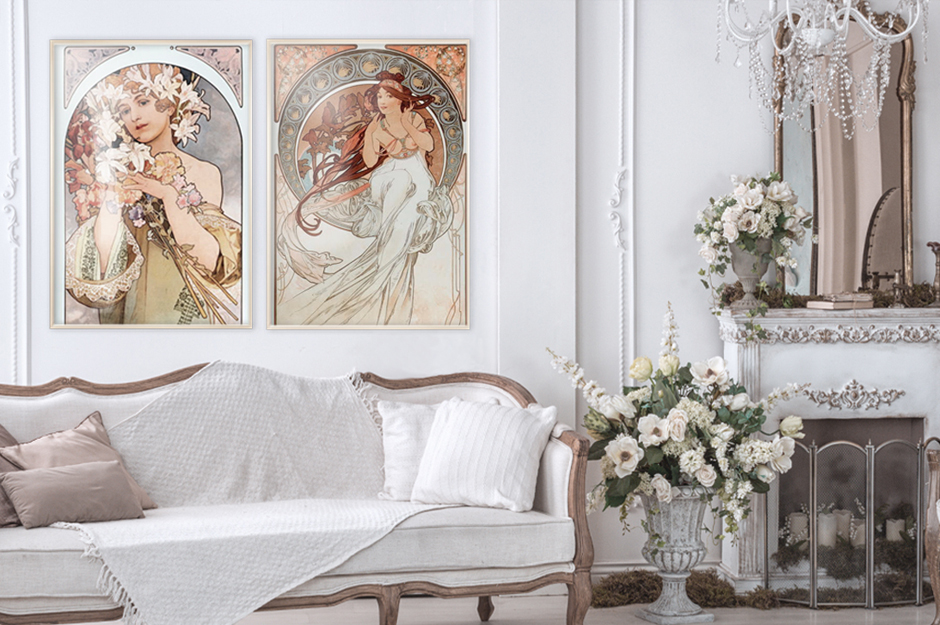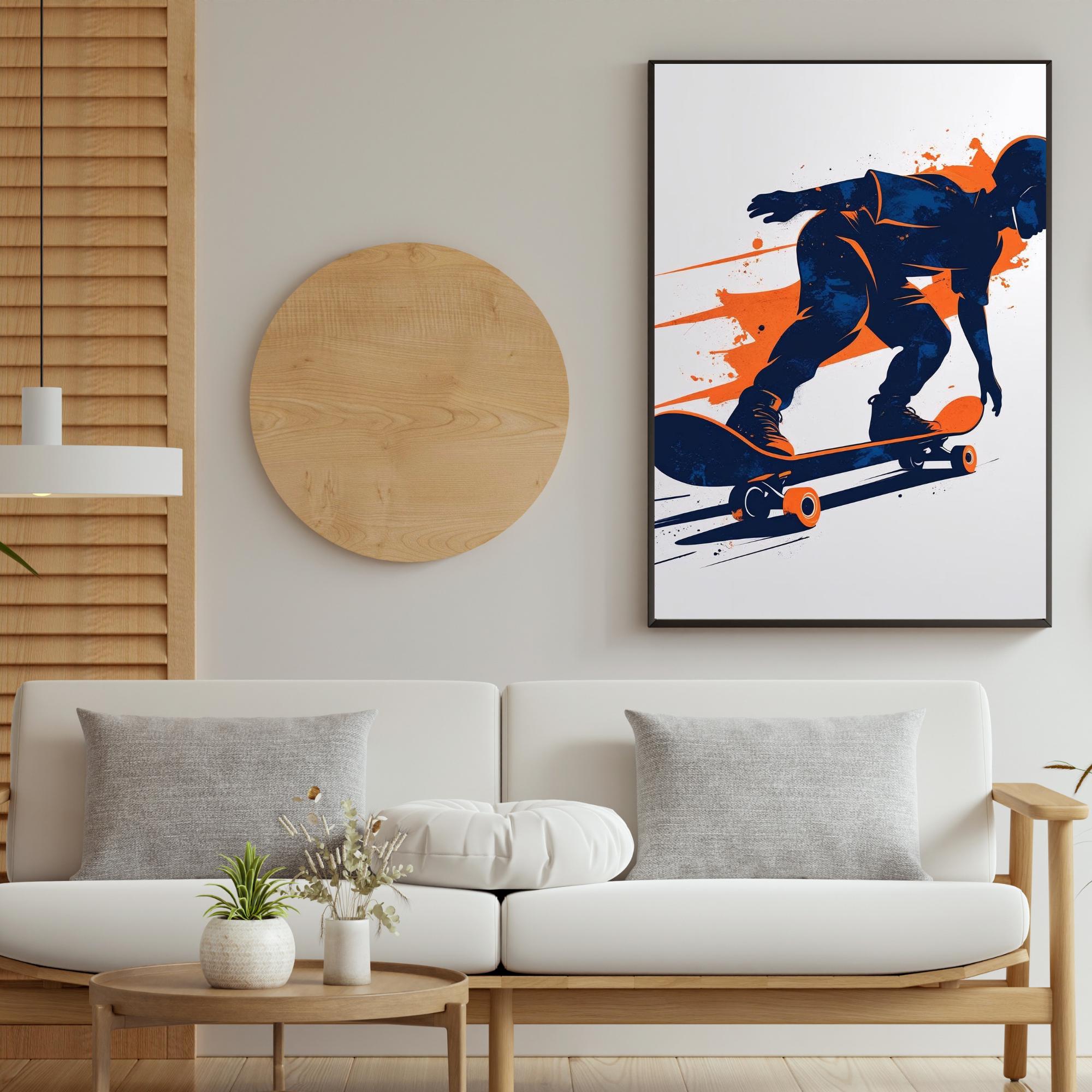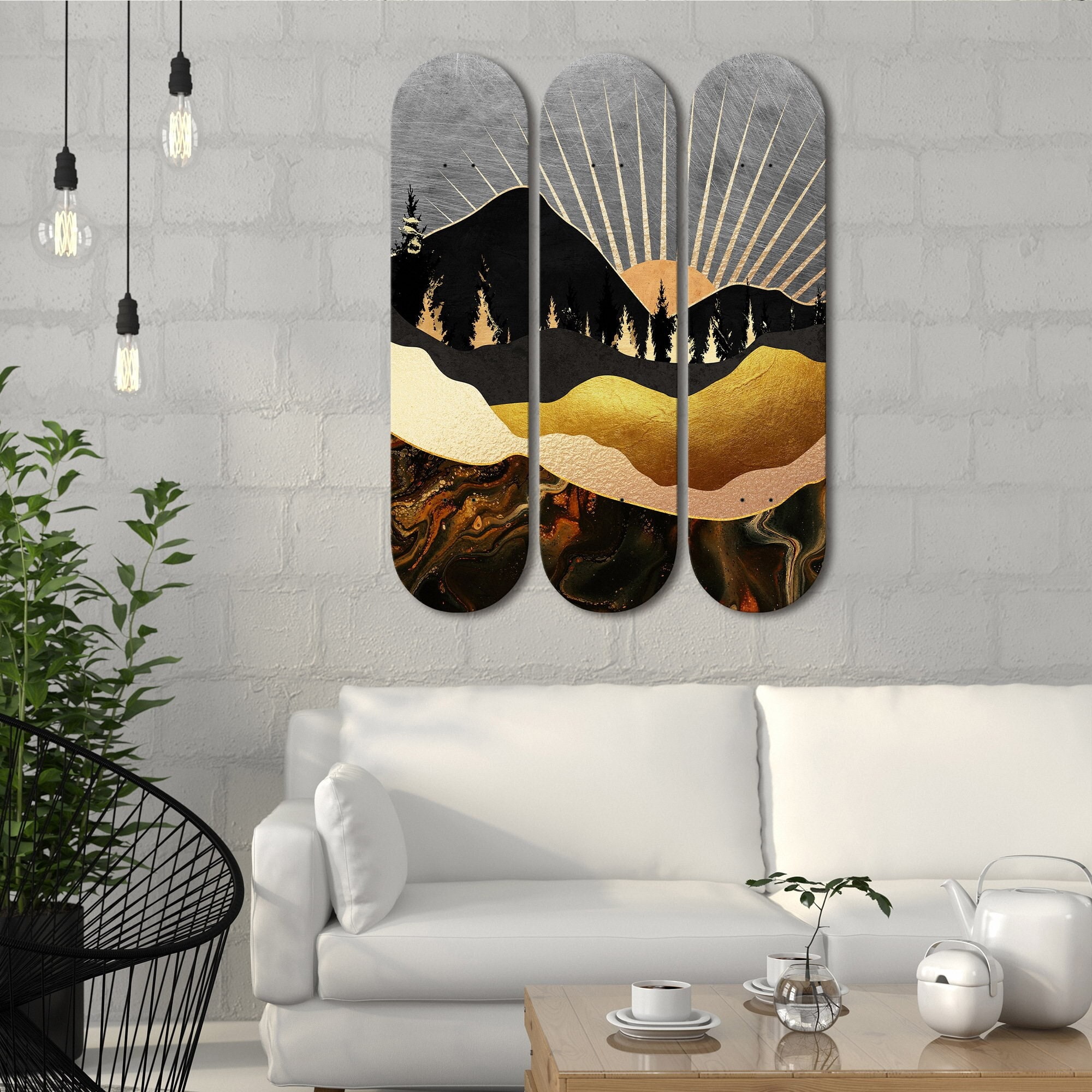Last month, a client contacted me with an unusual dilemma. She'd been commissioned to decorate a trendy Berlin co-working space and couldn't decide between classic art prints and skateboard wall art. "I love both," she admitted, "but I need to choose one direction." After walking her through the fundamental differences between these approaches, she chose skateboard art—and the results exceeded everyone's expectations.
This conversation happens more often than you might think. As someone who's spent five years immersed in Berlin's design scene while building DeckArts, I've witnessed countless debates between traditional wall decor and skateboard art. Having worked with both extensively, I can tell you definitively: when it comes to creating spaces that feel authentic, dynamic, and culturally relevant, skateboard art wins every single time.
But this isn't just personal preference talking. There are objective reasons why skateboard wall art outperforms traditional decor in almost every category that matters to modern homeowners and designers. From versatility and cultural relevance to investment potential and conversation value, skateboard art offers advantages that traditional prints and paintings simply can't match.
The Cultural Authenticity Factor

Traditional wall decor often feels disconnected from contemporary life. Walk into any furniture store, and you'll find the same landscape prints, abstract compositions, and generic photography that appears in thousands of homes. These pieces might be pleasant to look at, but they rarely reflect the owner's actual cultural experiences or interests.
Skateboard art emerges directly from lived culture. Every graphic tells a story about skateboard history, urban life, artistic collaboration, or social commentary. When you hang a piece from our authentic skateboard collection on your wall, you're not just adding decoration—you're connecting your space to a global cultural movement that spans decades and continents.
This authenticity becomes increasingly important as people seek ways to express their identities through their living spaces. The generation that grew up with skateboard culture, street art, and urban music wants their homes to reflect these experiences, not generic interpretations of what art should look like.
I see this constantly in Berlin, where residents gravitate toward art that reflects the city's creative energy rather than pieces chosen purely for their decorative value. As I explored in my article about how Berlin's street art scene shaped my vision, skateboard art fits naturally into this preference for authentic cultural expression over manufactured aesthetics.
Visual Impact and Sculptural Presence
Traditional prints and paintings exist entirely in two dimensions, creating flat visual experiences that can easily fade into background noise. Skateboard decks, by contrast, possess three-dimensional sculptural qualities that command attention and create dynamic visual interest.
The concave shape of a skateboard deck creates subtle shadows and depth that change throughout the day as lighting conditions shift. Multiple boards arranged thoughtfully on a wall create rhythmic patterns and dimensional layers impossible to achieve with flat artwork.

This sculptural quality makes skateboard art particularly effective in modern interiors with clean lines and minimal furniture. Where traditional art might get lost against stark walls, skateboard graphics create bold focal points that enhance rather than compete with contemporary architecture.
The narrow vertical format of skateboard decks also offers unique compositional possibilities. While traditional horizontal artwork can make walls feel lower and rooms feel smaller, the vertical emphasis of skateboard art draws the eye upward, creating illusions of height and space—crucial advantages in urban apartments and compact living situations.
Understanding how to maximize this visual impact is crucial, which is why I wrote extensively about proper lighting techniques after learning some expensive lessons firsthand.
Versatility Across Interior Design Styles
One of traditional wall decor's biggest limitations is its style specificity. A classical landscape painting works in traditional interiors but feels out of place in industrial lofts. Abstract prints suit modern spaces but clash with rustic or vintage aesthetics.
Skateboard art demonstrates remarkable versatility across design styles. The industrial materials—maple wood, screen-printed graphics, metal hardware—complement industrial and urban interiors naturally. The bold graphics and pop culture references work beautifully in eclectic and maximalist spaces. The clean lines and functional origins suit minimalist environments.
I've successfully placed skateboard art in Scandinavian-inspired apartments, converted warehouses, traditional Berlin altbau buildings, and ultra-modern penthouses. The key lies in understanding how different graphics and arrangement approaches work with specific aesthetic contexts, something I detailed in my guide to skateboard art for different interior styles.
For industrial spaces, pieces with raw graphics and visible wear create authentic urban atmosphere. In minimalist interiors, clean geometric designs and monochromatic color schemes maintain sophisticated restraint while adding visual interest. Eclectic spaces can accommodate bold, colorful graphics that would overwhelm more subdued design approaches.
Investment Value and Market Dynamics
Traditional mass-market prints and posters have virtually no resale value. Even expensive reproductions of famous artwork rarely appreciate beyond their original purchase price. The market for this type of decoration is essentially disposable—pieces get replaced when tastes change or trends shift.
Authentic skateboard art operates in an entirely different economic category. Limited edition skateboard pieces from recognized artists or historic skateboard companies often appreciate significantly over time. The skateboard art market combines elements of sports memorabilia, street art, and contemporary design, creating multiple value drivers that traditional decorative art lacks.
The growing recognition of skateboard culture in mainstream art institutions adds another layer of potential value appreciation. Museums now collect and exhibit skateboard graphics, galleries feature skateboard artists, and auction houses regularly sell vintage boards for substantial sums.
This investment potential doesn't mean you should choose skateboard art purely for financial reasons, but it does mean that quality pieces hold their value while providing ongoing aesthetic enjoyment—a significant advantage over traditional decorative purchases. I explored this topic in depth in my analysis of the economics of authentic street art.
Conversation Value and Social Connection
Traditional wall decor rarely generates meaningful conversation. Generic prints and landscapes might receive polite compliments, but they don't typically spark engaging discussions or create connections between people.
Skateboard art consistently becomes a conversation focal point. Guests want to know about specific artists, skateboard companies, or cultural references. These conversations often lead to broader discussions about urban culture, personal experiences with skateboarding, travel stories, or shared cultural interests.

This social dimension extends beyond casual entertaining. I regularly receive messages from customers who've connected with others through their skateboard art displays—meeting neighbors with similar interests, bonding with colleagues over shared cultural appreciation, or using their collections as icebreakers in professional settings.
The cultural knowledge embedded in skateboard art also provides ongoing educational value. Learning about different artists, skateboard companies, and design evolution becomes a hobby that deepens appreciation for your collection while expanding cultural understanding.
Customization and Personal Expression
Traditional wall decor offers limited opportunities for personalization. You can choose from existing prints, paintings, or photographs, but creating truly custom pieces typically requires commissioning expensive original artwork.
The skateboard art market includes extensive customization options at various price points. Many artists and companies offer commissioned graphics based on personal themes, color preferences, or specific cultural references. Custom skateboard art allows for personal expression while maintaining connection to authentic skateboard culture.
At DeckArts, we regularly work with customers on custom skateboard wall art that reflects their individual stories while honoring skateboard art traditions. Our approach balances personal vision with cultural authenticity, ensuring each piece maintains connection to the broader skateboard community while expressing individual aesthetic preferences.
This customization extends to display arrangements as well. Unlike traditional art pieces with fixed orientations and standard framing requirements, skateboard decks can be arranged in countless configurations, creating personalized gallery walls that evolve over time.
Durability and Maintenance
Traditional prints and paintings require careful handling, climate control, and protection from UV light to maintain their appearance over time. Paper-based artwork is particularly vulnerable to humidity, fading, and physical damage.
Skateboard decks are built to withstand impact, weather, and intensive use. Even when repurposed as wall art, they retain this inherent durability. The maple construction and screen-printed graphics resist fading, moisture damage, and minor impacts that would destroy traditional artwork.
This durability makes skateboard art particularly suitable for high-traffic areas, family environments, or commercial spaces where traditional artwork would be impractical. Restaurants, offices, retail spaces, and homes with children or pets can display skateboard art without the protective measures required for traditional pieces.
Maintenance is similarly straightforward. Occasional dusting maintains appearance, and the robust construction means pieces can be relocated, rearranged, or stored without risk of damage. For detailed care instructions, I've written a comprehensive guide on caring for your skateboard art investment.
Cultural Relevance and Future-Proofing
Traditional decorative art often reflects past aesthetic trends rather than contemporary cultural developments. Landscape paintings, abstract prints, and classical reproductions might have timeless appeal in certain contexts, but they don't engage with current cultural conversations or artistic movements.
Skateboard culture continues evolving, with new artists, techniques, and cultural connections emerging constantly. This ongoing development means skateboard art remains culturally relevant and connected to contemporary artistic practice rather than frozen in historical styles.
The increasing mainstream recognition of skateboard culture—from Olympic inclusion to museum exhibitions—suggests this relevance will continue growing rather than diminishing. Choosing skateboard art positions your space within current cultural conversations rather than referencing past artistic movements.
Space Efficiency and Urban Living
Modern urban living often involves compact spaces where every design choice must maximize impact while minimizing visual clutter. Traditional artwork can feel overwhelming in small spaces, particularly when multiple pieces are needed to create adequate visual interest.
Skateboard art's narrow profile and strong visual impact make it exceptionally efficient for small spaces. A single board can provide the visual weight of a much larger traditional piece, while arrangements of multiple boards create gallery-like impact without overwhelming modest rooms.
The vertical orientation naturally draws the eye upward, making small spaces feel larger—a crucial advantage in urban apartments and compact homes. This space efficiency doesn't come at the cost of visual impact; skateboard graphics are designed to be compelling and memorable even in brief viewing situations.
The Berlin Test: What Actually Works
Living in Berlin provides constant exposure to both traditional and contemporary design approaches. The city's mix of historic architecture and cutting-edge culture creates environments where different aesthetic strategies compete directly.
In my experience, spaces that successfully combine traditional architectural elements with contemporary cultural references feel more dynamic and relevant than those that commit entirely to historical aesthetics. Skateboard art provides an ideal bridge between past and present, honoring craftsmanship traditions while engaging with current cultural movements.
The most successful Berlin interiors I've observed use skateboard art to inject personality and cultural relevance into spaces that might otherwise feel generic or disconnected from contemporary life. This approach creates environments that feel both sophisticated and authentic—a difficult balance to achieve with traditional decorative choices alone.
Making the Transition
For those considering the move from traditional wall decor to skateboard art, the transition can be gradual and strategic. Start with a single statement piece in a prominent location, allowing yourself to experience the difference in visual impact and cultural resonance.
Pay attention to how guests respond to the piece, how it affects your daily experience of the space, and how it integrates with your existing design elements. Most people find that skateboard art enhances rather than competes with other design choices, creating opportunities for thoughtful integration rather than wholesale replacement.
Consider your specific space requirements, personal aesthetic preferences, and cultural interests when selecting pieces. The goal isn't to follow trends but to choose artwork that genuinely reflects your values and enhances your living environment.
After five years of working with both traditional and contemporary wall art in Berlin's diverse design landscape, I'm convinced that skateboard art offers superior value in almost every category that matters to modern homeowners. The combination of cultural authenticity, visual impact, investment potential, and personal expression creates advantages that traditional decorative art simply cannot match.
This doesn't mean traditional art lacks value or place in contemporary interiors. But for people seeking wall decor that reflects their actual cultural experiences while providing lasting aesthetic and financial value, skateboard art represents the clear choice.
The pieces we offer at DeckArts embody this philosophy—authentic cultural artifacts that function as sophisticated contemporary art while maintaining connection to the vibrant, evolving world of skateboard culture.
Stanislav Arnautov is the founder of DeckArts, a Berlin-based company specializing in authentic skateboard wall art. With over five years of experience in Berlin's dynamic creative scene and deep roots in skateboard culture, Stanislav bridges the gap between street culture and contemporary interior design. Follow his insights on Instagram @rntv and visit his personal website at stasarnautov.com.

